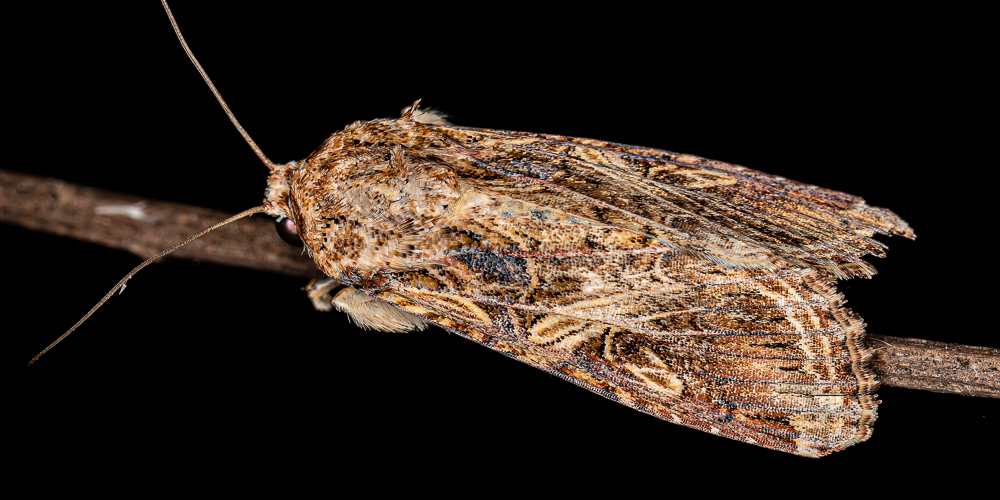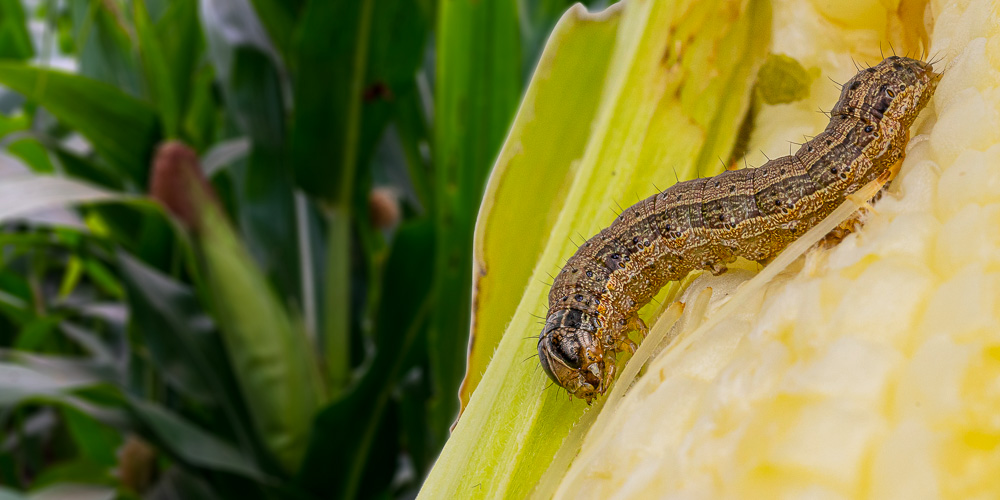Lawn-owners and golf courses as far north as Canada last summer got a rare taste of fall armyworm damage, a problem that the Southeast has faced for more than a century.
Unusual wind propelled large populations of this warm-climate insect faster and farther north than usual, causing large swaths of brown lawns that were often mistakenly chalked up to more familiar late-summer woes, such as drought stress, disease, and grub damage.
What happened?
Fall armyworms are caterpillars that are native to the tropics and south Florida and south Texas. They don’t tend to overwinter in colder climates.
However, summer winds normally carry armyworm moths northward, where the caterpillars hatch from moth-laid eggs and feed on dozens of plant species, including alfalfa and other grain crops. Turfgrasses are a favorite, too.
Gusty storms last July carried moths farther than usual – by some estimates, 500 miles in a single day. By August and September, armyworm caterpillars had hatched and grown enough that homeowners and golf-course superintendents were reporting severe turfgrass damage throughout the mid-Atlantic and Northeast.
Although the damage was spotty, it was widespread where it occurred. After all, armyworms got their name from their quickly advancing waves of damage, similar to an invading army moving en masse.

Armyworm Moth
ViniSouza128 / iStock / via Getty Images
Recovering from the damage
The good news is that armyworms generally eat the blades of grass and not the crowns – the growing point from where the blades emerge. Because of that, otherwise healthy lawns usually grow back on their own. Some recovery occurred last fall after the cold killed the armyworms and new blades grew before the ground froze.
The arrival of warming soil and increasing light this spring should lead to a full recovery. However, if your lawn is still brown or thin – from armyworm damage or another malady, for that matter – May is a good month to repair it with new grass seed.
Whether you’re reseeding bare spots or overseeding thin patches, the first step is loosening or scratching the soil so that the young grass roots from the new seed will be able to penetrate the surface. A rake is fine for small areas and thin spots, while a power dethatcher or aerator is recommended for bigger situations.
Cut the existing lawn short, then scatter new seeds over the ground. About 16 seeds per square inch is a good guide. Lightly rake so the seed is distributed into the top quarter-inch of the loosened soil, then lightly tamp the soil to enhance seed-to-soil contact. Keep the ground consistently damp until the seed is up.
GreenView Fairway Formula Grass Seeds offer a variety of different mixes for different situations.
GreenView Starter Fertilizer with GreenSmart is a fertilizer designed for new grass, while GreenView Fairway Formula Seeding Success is a product that combines fertilizer with paper mulch to aid seed germination.

Armyworm
ossyugioh / iStock / via Getty Images
The armyworm outlook
Just because armyworms posed a more widespread problem last year doesn’t mean we’ll see a repeat this year. Fluctuations are normal from year to year and are dependent on factors such as weather and predators. That’s why annual preventive insecticides aren’t recommended, especially north of the Mason-Dixon line.
One early indication of new trouble is if you notice unusual bird-feeding activity on the lawn. The birds could be feeding on a newly arrived buffet of young armyworm caterpillars.
A second at-home check is making a mix of two tablespoons of liquid dishwashing soap per gallon of water and pouring it over a square-foot area of lawn. In 10 to 15 minutes, armyworm caterpillars (as well as other lawn-dwelling bugs such as sod webworms and chinch bugs) should come to the surface.
Armyworms are greenish-brown in color, have stripes running down their back, and have an inverted Y-shaped mark on the front of their head. When fully grown, they’re about an inch and a half in length.
A third check is to get down on your hands and knees with a magnifier and look for striped caterpillars munching on grass blades.
Early outbreaks can be stopped with a treatment of the natural bacterium Bt (Bacillus thuringiensis) or with one of several insecticides labeled for armyworm control.
Entomologists aren’t sure yet whether the 2021 northerly assault was a peculiar one-off or the beginning of a northward armyworm shift due to climate change and more extreme, erratic storms.